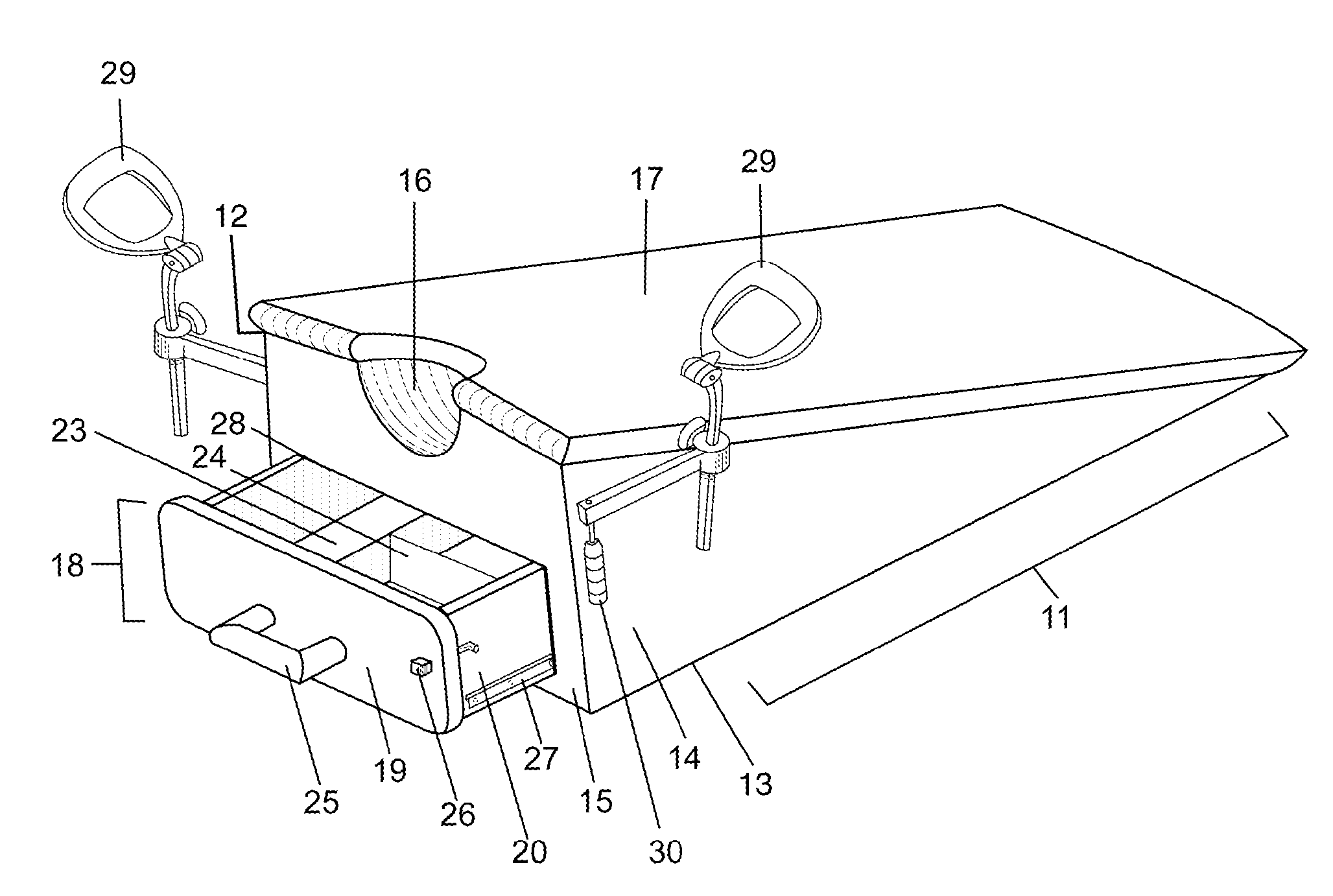Lightweight portable pelvic exam device
a portable, pelvic exam technology, applied in the field of medical devices, can solve the problems of inconvenient transportation from location to location, lack of existing and prior art, and no lightweight portable pelvic exam table or device that can be carried, and achieve the effect of convenient transportation
- Summary
- Abstract
- Description
- Claims
- Application Information
AI Technical Summary
Benefits of technology
Problems solved by technology
Method used
Image
Examples
Embodiment Construction
[0027]As described above, the present invention provides a new and useful portable pelvic exam device which is lightweight, easily transportable and can be used on existing beds or tables to support an OB / GYN patient in a dorsal or modified lithotomy position for examination or procedure. This device is believed to be useful in hospitals and clinics, wherein OB / GYN examinations may need to be performed, wherein few or no full-size, dedicated pelvic exam tables are available, or in environments where budget or space restrictions require a more frugal or temporary option. A device according to the invention is also believed to be favorable for use with immobile patients or in emergency situations. The following description and accompanying drawings disclose at least one version of such a device.
[0028]Referring now to the invention in more detail, in FIG. 1 to FIG. 4 there is shown a portable lightweight pelvic exam device comprising a prismatic base 11 having top surface 12, a bottom ...
PUM
 Login to View More
Login to View More Abstract
Description
Claims
Application Information
 Login to View More
Login to View More - R&D
- Intellectual Property
- Life Sciences
- Materials
- Tech Scout
- Unparalleled Data Quality
- Higher Quality Content
- 60% Fewer Hallucinations
Browse by: Latest US Patents, China's latest patents, Technical Efficacy Thesaurus, Application Domain, Technology Topic, Popular Technical Reports.
© 2025 PatSnap. All rights reserved.Legal|Privacy policy|Modern Slavery Act Transparency Statement|Sitemap|About US| Contact US: help@patsnap.com



